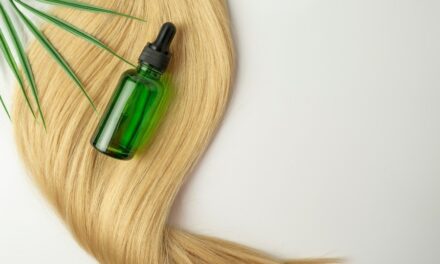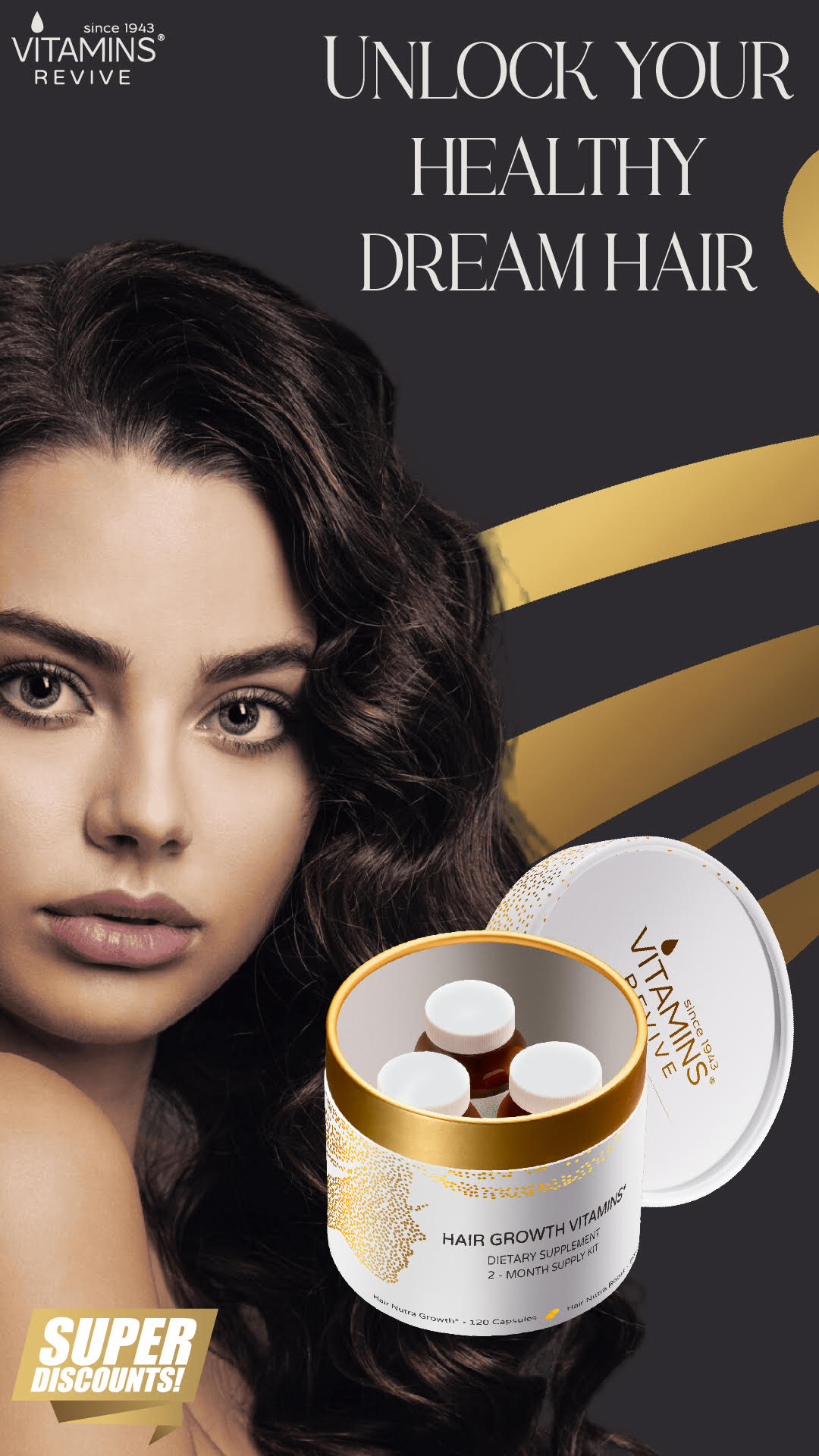
Hair is our crowning glory, so it’s no surprise we try everything we can to increase hair growth. You’ve probably tried everything you know, but the results aren’t where you’d like them to be. But we all love lustrous and strong hair, so what do we do about it?
Even pricey hair growth products can be a hit or miss. A DIY hair growth serum promotes hair growth and nourishes and nurtures hair. The best part about DIY is you know what goes into your products, can prepare them using natural ingredients, and customize them according to your requirements.
Let’s understand more about our hair, how to promote hair growth, and more about how different ingredients contribute to your hair and scalp health. This way, you can choose your ingredients and craft your own hair growth serum or whatever product you like.
Understanding Hair Growth
With our hectic lifestyle, changing dietary habits, using heat and styling tools or treatments, and a fast-paced lifestyle with a lack of exercise, our body has gone through numerous changes. It reflects on everything, including the health of our hair. Today, our hair needs additional care and nurturing than before.
Many factors can affect one’s hair growth, including hair loss contributing to the loss of hair, which means there’s no increase in volume even with a good growth rate. However, hair loss often means stunted or reduced hair growth or regrowth. So there’s that too.
Hormonal imbalance plays a key role in hair health, so pregnancy and postpartum hair loss and reduced hair growth are common. Stress is very common in our lives and contributes greatly to hair loss, a reason we should also curb hair fall while tying for faster hair growth.
Did you know 10% of our hair follicles rest at a time? Yes, our hair follicles have a cycle where they rest for a few months and grow for a few months. This cycle is affected by several factors which affect hair growth.
There are three stages in hair growth – anagen phase, catagen phase, and telogen phase. Every hair strand will be in one stage of development or the other, and when the cycle is completed, it is repeated all over again, and a new strand begins to grow.
One’s health condition, hormonal imbalance, prescription medications and treatments like chemotherapy, hair loss, stress, improper dietary habits, deficiencies, and certain health issues can affect hair growth rate.
Having that said, having a proper hair care routine and doing things that improve hair and scalp health can influence hair growth positively. You can do that with DIY hair growth serum or other products that you can prepare using natural and usually available ingredients in your pantry to get your journey started.
The Best Ingredients and Their Benefits

Different cultures and countries have different ingredients they rely on more for hair growth or their hair and scalp-related benefits. But most of them are common and overlap in one form or the other, and with globalization, most ingredients are available anywhere.
Some of the more popular ingredients for hair growth and the ones you can consider for your DIY recipes are Aloe Vera, Coconut Oil, Fenugreek, Argan Oil, Chinese Hibiscus, Sweet Almond Oil, Onion, Castor Oil, Indian Gooseberry, Garlic, ACV, Castor Oil, Fish Oil, Yogurt, Biotin, Ginseng, Green Tea, Stinging Nettle, Melatonin, Jojoba Oil, Ginkgo Biloba, False Daisy, Dwarf Copperleaf, Horsetail, Coconut Milk, etc.
DIY Hair Growth Serum Recipe
This simple and straightforward recipe can work well to promote hair growth and strengthen hair follicles. It will also curb hair loss and improves scalp health. Make it a part of your regular hair care routine for best results.
What You’ll Need
- Avocado Oil – 2 Cups
- Willow Bark – 30 Grams
- Rosemary – 30 Grams
- Peppermint – 10 Grams
- Horsetail Leaf – 20 Grams
- Green Tea – 10 Grams
- Vitamin E Oil – 1 Tsp.
- Castor Oil – 95 Gms
- Rosemary Essential Oil – 25 Drops
- Cinnamon Essential Oil – 7 Drops
How to Make the Serum
We’re preparing the hair serum in two steps. The first step involves infusion using a slow cooker so there’s no waiting time for the infused oil.
Add the cleaned and dried herbs to a sterilized mason jar to prepare the infused oil.
Now, pour the avocado oil on top of it – the oil level should be higher than the herbs so they can soak in and infuse the oil thoroughly.
Add in the Vitamin E oil and mix to combine.
Cover the mason jar with a tight lid so there’s no way water or steam can seep in.
Place a thick hand towel at the bottom of the slow cooker vessel to create a barrier between the pot and the jar, though you can also use a stand like a steaming stand to create the bridge.
Now, fill the crock pot with enough water to almost submerge the jar, but way below the opening so water can’t sleep in.
Now, set the timer to 8 – 12 hours and let the slow cooker do its job!
Keep checking at regular intervals to sense the temperature doesn’t cross 110 degrees to keep the nutrients in the herbs intact. You can switch off if it gets too hot or leave the lid open to bring down the temperature.
Once the infused oil is ready, let it cool down fully.
Once the oil cools down fully, filter the oil into a sterilized measuring jar.
You can use a cheesecloth to filter and gently press down the herbs to extract the oil fully.
Add in the castor oil and the essential oils at this stage.
Shake gently to combine and transfer to a sterilized dispenser.
You can use a dropper glass bottle for ease of use.
The DIY hair growth serum is ready for use in a day or two – it gives time for the essential oils to combine well with the base oils.
How to Apply Hair Growth Serum

Take enough diy hair growth serum on your palms and gently massage it into your scalp using your fingertips.
Run the serum on your fingertips to warm it up before applying and massage gently.
Don’t skip on the massaging part – this is relaxing and pampering for your hair and scalp, but it’s also not without benefits. It helps loosen up the buildup making it easier to get rid of scalp accumulation. This also improves hair growth.
Make sure to cover everywhere and then comb with a wide-toothed comb to stimulate blood flow.
Let it sit for a good couple of hours or overnight before washing off – depending on your preference, health, hair washing routine, etc.
Rinsing Process
Gently massage your head and finger comb to get rid of tangles before rinsing off your hair with lukewarm water.
Shampoo and condition as usual.
Air dry and style your hair.
Notes
Don’t use hot water to wash your hair; stick to lukewarm water for rinsing off.
You can use your own essential oil blend instead of the two oils we’ve chosen here.
You can use this once or twice a week to promote healthy hair growth and scalp health.
You can use any carrier oil that is heat stable, like coconut oil, avocado oil, etc.
How Does This DIY Hair Growth Oil Work?
The ingredients we’ve chosen are proven hair growth remedies and have been used for a long time. The herbs we have chosen are all great to promote hair growth and make this serum stand out – willow bark, rosemary, peppermint, horsetail, and green all work together to improve hair growth.
This DIY hair growth serum improves scalp circulation, helps with clarifying and cleansing the scalp, and increases the hair growth phase, thus improving the hair growth rate. The antimicrobial property curbs scalp issues and infections, while the antioxidant property improves hair growth.
Let’s dig deeper to know more about these ingredients and why they work in this recipe, shall we?
Avocado Oil
We chose avocado oil for the infusion because it’s more heat-stable. Also, it’s very nourishing and healing and can promote hair growth. We all know avocado oil is extracted from the fruit just like olive oil is, but did you know it’s also a great moisturizer and hydrator?
It suits most hair types but is particularly good for dry or damaged hair. It penetrates deep into your hair shaft and scalp, nourishing from within.
Though this is a nutrient-rich oil, you can use it every day, even twice a day, if warranted! It nourishes and strengthens hair, promotes hair growth, makes your hair shiny, acts as a hair protectant, and improves scalp health.
White Willow Bark
If you’re combatting scalp issues like dandruff or seborrheic dermatitis, or even pimples, white willow bark can help you with those issues. It contains anti-inflammatory salicin, which is also a mild exfoliant and keeps your scalp clear.
Salicylic acid is a derivative of willow bark and is widely used in anti-dandruff shampoos, serums, and other scalp treatments. It’s also used to treat scalp psoriasis.
While all this doesn’t translate to hair growth directly, it does help with clarifying the scalp and unclogging hair follicles and pores, reducing scalp buildup and other scalp issues. A healthier scalp promotes better hair growth and hair health.
Rosemary
Rosemary isn’t the most popular hair growth remedy without a reason. According to studies, rosemary is as good as minoxidil, a hair loss medication, without any negative side effects.
Rosemary promotes hair growth by improving blood flow to the scalp, strengthening hair follicles, and helping with nutrition absorption. It also promotes new hair growth.
Its antifungal and antibacterial properties are good for improving scalp health; as we all know, excessive yeast growth and other scalp issues are associated with hair fall and itching. Rich in antioxidants, rosemary protects hair from oxidative damage and offsets stress.
Peppermint
We all know peppermint is refreshing, but did you know it can play a key role in hair care along with rosemary? Yes, it is used for combating dandruff, soothing the scalp, and increasing growth by stimulating scalp circulation.
Some say it’s better than rosemary regarding hair growth results. At only 3%, it is more effective than minoxidil and promotes longer and thicker hair. The anti-inflammatory, antimicrobial, and antifungal properties also keep your scalp healthy.
Horsetail Leaf
This is another proven natural remedy that works wonders for hair growth. It is also rich in antioxidants and helps reduce oxidative damage.
Green Tea
Sipping green tea is good for your health, and topical application is great for your skin and hair. The rich antioxidant content promotes healthy hair and improves the health of hair follicles.
The good news is that while it gives the oil a nice green hue, it doesn’t stain your hair even if it is light, like blonde, for example.
Vitamin E Oil
Several studies were done to check the efficacy of Vitamin E in hair growth, and the results were encouraging. Rosemary and vitamin E both stimulate the scalp’s blood flow and follicular microcirculation, and both of these help with improving hair growth and hair thickness.
Vitamin E oil will also stabilize your carrier oil during infusion, which is an added bonus to the heat infusion process.
Castor Oil
Castor oil is used in alternative medicine widely as it promotes hair growth and regrowth. It’s one of those remedies that really work to improve hair length and thickness with regular use.
It is very effective, thanks to the prostaglandin-like property, which increases the hair growth phase and reduces the resting phase to promote faster and better hair growth. It also keeps your hair from dryness and breakage.
The antioxidant content protects hair follicles from damage. The antifungal and antibacterial properties keep your scalp healthy.
Rosemary Essential Oil and Cinnamon Essential Oil add a subtle aroma to the serum. The stimulating properties of both these oils complement the other ingredients used in this serum, though you can use your favorite essential oils instead.
Tips for Making Hair Growth Serum at Home
Always use dried herbs for infused oils, as they won’t have moisture content. Moisture can promote mold growth and bacterial growth. You don’t want mold-ridden and rancid oil that’s not usable!
Always choose heat-stable oils for preparing infused oils by heat. Monosaturated or saturated oils work best.
Use sterilized and dried containers for preserving diy products so there’s no microbial infestation.
Conclusion
Pricey products don’t translate to results, but when you make your own hair serum recipe, you can change them up every few days if you don’t see results. We can prepare small batches of the recipes and different variations of the same and try out to see what works best.
DO try out the diy hair growth serum recipe you like and see how it works out for you. DIY Is very flexible and customizable, so it’s a great way to craft and modify a recipe or product to suit you. You can also avoid any allergens and harsh ingredients and make them more to your taste.
Don’t have time for DIY Recipes. No issues; we have got you back! Do take a look at the online store for Vitamins Revive when you have a moment. They have a broad range of premium vegan hair cosmetics that are cruelty-free, and with so many options, there should be one that suits your requirements.
As always, do let us know how the DIY recipes work out for you and any changes that were really good. We love hearing from you readers. So, please let us know your feedback, requests, or even if you have any questions or concerns.
FAQs
How long should I use a hair serum?
You can use it for as long as you need it. If you find it superfluous, you can stop and restart it at a later time if needed.
Should I use a hair serum every day?
While you can use it every day if needed, it’s not needed per se. You apply it right after you wash your hair and dry it, and then as and when needed – for example, when your hair is dry or frizzy.
What’s the duration to know if a hair serum is working for me?
More often, people quit too soon when they don’t see results right away. Most natural products take time. Give it at least two weeks or more before you decide if it’s working for you. Remember: You should have no adverse fractions to the serum. If you do, stop it immediately. However, the mild hair fall when you switch to a new recipe is normal and will go away after using it once or twice.
What about side effects?
Any chemical-based product will have side effects. But this is a natural recipe, and as such, you won’t have to worry about side effects. Just make sure to do a patch test and check for allergies before you start using.









